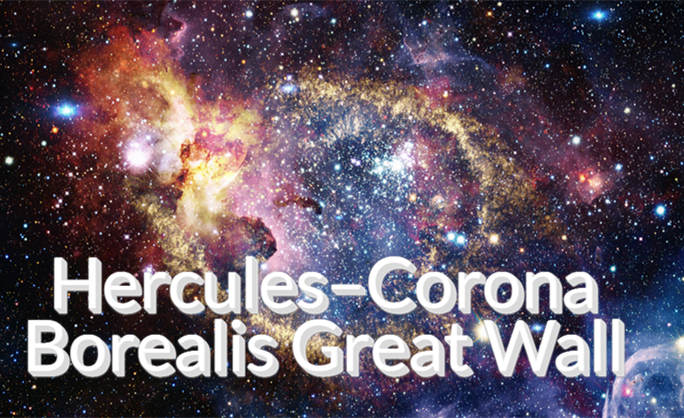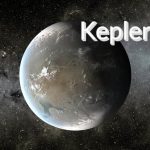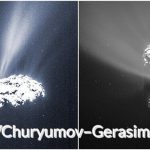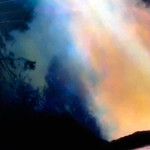In the vast depths of the universe, numerous mysterious and colossal structures remain concealed, and one of the most remarkable marvels is the Hercules–Corona Borealis Great Wall. This is an immense superstructure woven together by galaxies, surpassing the radiance of any known structures observable in our universe. In the eyes of astronomers, this cosmic wall represents a new frontier in the observation of the universe, a window into unraveling the mysteries of the cosmos.
The Hercules–Corona Borealis Great Wall is a part of large-scale fibrous structures, perhaps a colossal cluster of galaxies bound together by gravity. The length of this cosmic wall spans approximately 10 billion light-years on its longest side (3 billion parsecs), while the other end measures 7.2 billion light-years (2.2 billion parsecs, with a redshift velocity of 150,000 km/s in redshift space), making it the largest known single structure in the universe. The redshift value of the Hercules–Corona Borealis Great Wall ranges from 1.6 to 2.1, equivalent to a distance of approximately 10 billion light-years from Earth. Its name originates from its projected position in the celestial sphere, lying between the Hercules and Corona Borealis constellations.
In November 2013, astronomers successfully charted the distribution of multiple gamma-ray burst locations in the distant universe using data from the Swift satellite and Fermi Gamma-ray Space Telescope. Astonishingly, within this remote cosmic corner, they uncovered a colossal structure that transcends imagination—the Hercules–Corona Borealis Great Wall. This discovery not only expands our understanding of cosmic scales but also kindles a curiosity about deeper mysteries within the universe.
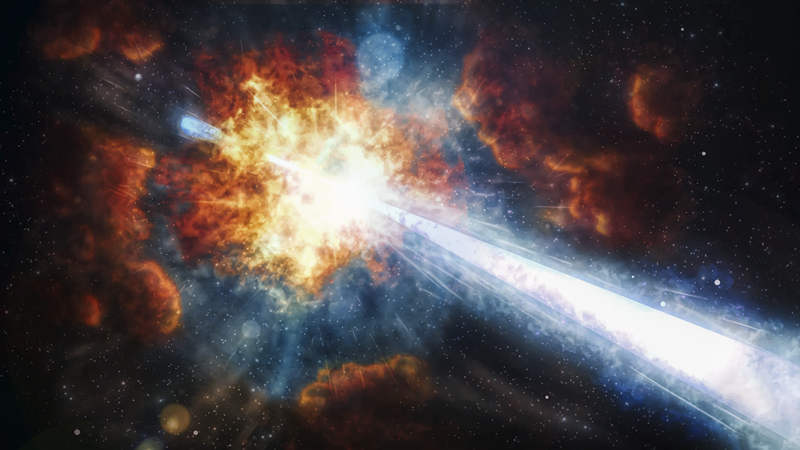
The Enigma of Gamma-Ray Bursts: Unveiling Clues to Massive Structures in the Cosmos
A gamma-ray burst is one of the most energetic astronomical events known in the universe. Its essence lies in the catastrophic explosion produced when a distant, massive star meets its demise, emitting incredibly bright gamma-ray radiation. Gamma-ray bursts are relatively rare astronomical occurrences, happening approximately once every few million years in galaxies similar to our Milky Way. Theoretically, these bursts are believed to originate from the explosive deaths of highly luminous massive stars, typically formed in denser regions of matter. As such, gamma-ray bursts can serve as standard candles for galaxies, allowing astronomers to trace regions of material disruption throughout the universe.
Astronomers Istvan Horvath, Jon Hakkila, and Zsolt Bagoly analyzed observational data from 1997 to 2012, dividing the entire sky into 9 regions, each containing 31 gamma-ray bursts. Among these segmented data, 14 of the 31 gamma-ray bursts were concentrated within a 45° width, corresponding to one-eighth of the entire sky, with redshift values ranging from 1.6 to 2.1. Results from the Kolmogorov-Smirnov test indicated that the substantial concentration of gamma-ray bursts in this specific region could not be solely attributed to biases caused by data selection. If numerous gamma-ray bursts occur in this region, there must be thousands or even millions of galaxies to support such events. Therefore, the ultimate conclusion suggests the presence of a structure in this region, with a length exceeding six times that of the Sloan Great Wall, and located approximately 10 billion light-years away from Earth.
The Astonishing Enigma of the Universe: Unraveling the Discovery challenging Homogeneity Scales
According to the principles of cosmology, the universe is considered nearly homogeneous on sufficiently large scales. This implies that random fluctuations in quantities, such as differences in material density between different regions, are not significant. It suggests that matter and energy in the universe must be uniformly and isotropically distributed. As physical laws and forces, such as gravity, are expected to be the same mechanisms throughout the entire universe, critical random distributions should not exhibit measurable differences on sufficiently large scales. However, there are multiple scales used to explain corresponding homogeneity scales, and the appropriate definition depends on the circumstances, determined by the observer’s chosen scale of homogeneity.
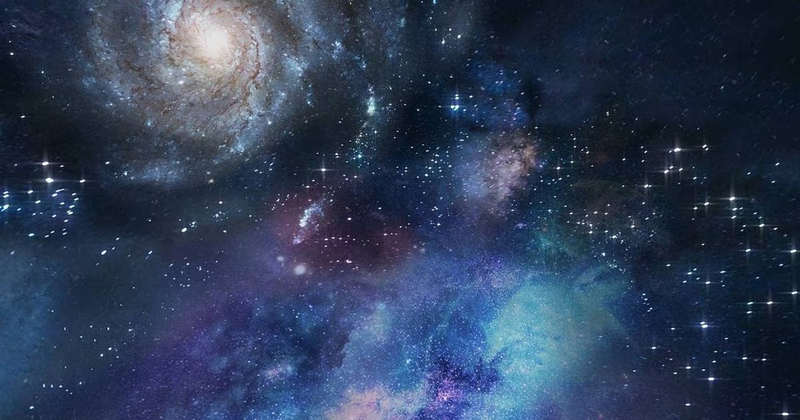
Currently, the leading theoretical explanation for the homogeneity scale issue is the “Great End,” which proposes that, even on the largest scales, the observed appearance of the universe remains homogeneous through the lens of this theory. The recognized required scale for the “Great End” is approximately 2.5 to 3 billion light-years. When considering the normal density of the universe determined by the cosmic microwave background radiation, the upper limit of the homogeneity scale is roughly four times the aforementioned scale (10 to 12 billion light-years or 3.07 to 3.7 billion parsecs), representing the best-fitting solution for the upper limit of homogeneity scales. However, Jaswant Yadav and others proposed a value of 260/h Mpc based on the fractal dimension of the universe, which is smaller than the aforementioned values. Some scientists point out that, based on measurements of homogeneity scales, the maximum size of structures is approximately 70-130/h Mpc.
Despite the earlier expectation that the universe should not contain structures larger than the upper limit, larger structures have been discovered, such as:
1. The Clowes-Campusano LQG, discovered in 1991, spanning 5.8 billion parsecs, slightly exceeding the aforementioned upper limit.
2. The Sloan Great Wall, discovered in 2003, with a length of 4.23 billion parsecs, also slightly larger than the speculated upper limit.
3. The Huge Large Quasar Group (Huge-LQG), discovered in 2012, with a length of 12.4 billion parsecs, three times the upper limit of homogeneity scale. However, the individual quasars within this structure are not correlated with each other, providing no evidence for the formation possibility of this structure.
The Hercules–Corona Borealis Great Wall, discovered in 2013, exceeds the homogeneity scale upper limit by more than eight times, equivalent to 10.7% of the observable universe. According to the principles of cosmology, this structure should exhibit inhomogeneity compared to other parts of the universe, even on the scale of the “Great End.” This discovery has led to further questioning of cosmological principles, suggesting that mathematical models describing the universe may be too simplified to accurately reflect its conditions. Astronomers are also preparing for further observations of gamma-ray bursts in this region to gain more insights.
The discovery of the Hercules–Corona Borealis Great Wall has raised questions about the cosmic evolution model. Its distance of 10 billion light-years from Earth implies an age of 10 billion years or formation approximately 3.79 billion years after the Big Bang. However, current models of cosmic evolution do not permit the formation of such a massive and complex structure within the first 3 billion years of the universe. The origin of such structures remains unknown.
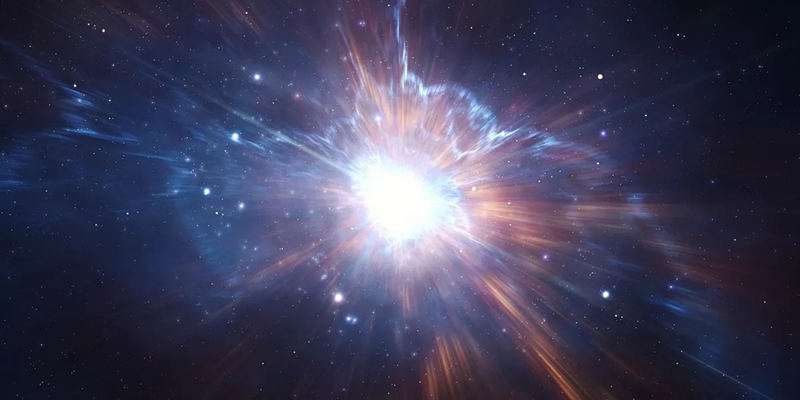
Has the discovery of the Hercules–Corona Borealis Great Wall overturned the Big Bang theory?
Does this finding make the Plasma Cosmology more plausible? Scientists no longer need to exhaustively search for dark matter, and the explanation of the Sun’s anomalies with leaky nuclear fusion is no longer necessary. NASA can confidently announce measured surface temperatures of the Sun. What people commonly refer to as the cosmic Big Bang is actually the second phase of the inflationary theory.
The inflationary process occurred between 10 to the power of -36 seconds and 10 to the power of -32 seconds after the cosmic Big Bang. After the inflation ended, the universe continued to expand, but at a much slower rate. In other words, in that extremely brief moment of inflation, the universe’s size essentially took shape, and subsequent expansion happened gradually. Then, 380,000 years after the universe’s formation, photons could finally move freely, and as predicted, there must be cosmic microwave background radiation, which is now fully confirmed.
In the cosmic scale, 10 billion light-years is not considered large. As mentioned, the age of the universe is 13.8 billion years, and the speed of light is constant. Therefore, the maximum distance light can travel in this time is 13.8 billion years. Why is our observable universe (theoretical limit) about 46.5 billion light-years? This is due to the expansion of the universe. Essentially, the light we observe from 13.8 billion years ago is now much farther away, around 46.5 billion light-years. Of course, this is a theoretical value, and the farthest light we currently observe is from objects approximately 31.5 billion light-years away (the scene after 4.8 billion years from the universe’s formation). This phenomenon is known as cosmological redshift. The Hercules–Corona Borealis Great Wall also exhibits a significant cosmological redshift. In reality, the observable universe is just a tiny part of the actual universe. Our line of sight only reaches about 46.5 billion light-years, and beyond that, the expansion rate is greater than the speed of light, meaning light will never catch up to us from those distant regions.
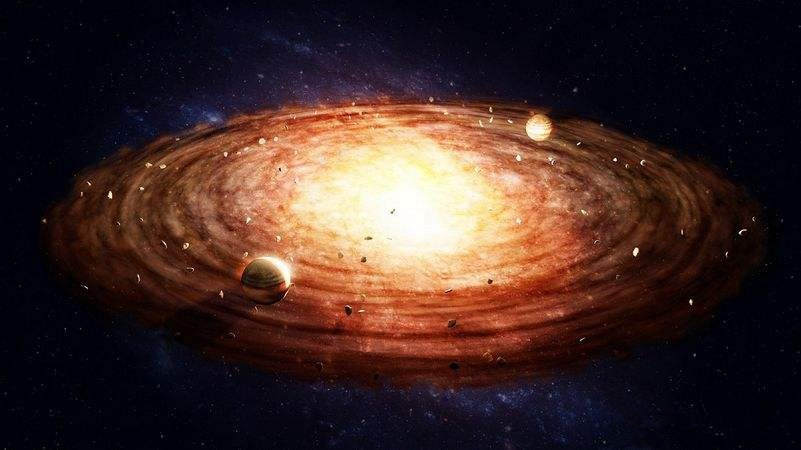
END:
In conclusion, the discovery of the Hercules–Corona Borealis Great Wall has not only challenged our understanding of the cosmos but also sparked a new era of exploration and inquiry. As scientists continue to delve into the mysteries surrounding this colossal structure, the future of research holds exciting prospects. One avenue of exploration involves a deeper investigation into the nature and origins of the Hercules–Corona Borealis Great Wall. Researchers aim to unravel the underlying mechanisms that led to the formation of such an immense cosmic structure, questioning our current cosmological models and pushing the boundaries of our knowledge.
Additionally, astronomers are eager to conduct further observations of the gamma-ray bursts within this region. Studying these phenomena in more detail may provide crucial insights into the dynamics and interactions within the Hercules–Corona Borealis Great Wall, shedding light on its role in the broader cosmic web. Furthermore, the discovery prompts a reevaluation of the fundamental principles governing the universe. The Hercules–Corona Borealis Great Wall challenges our assumptions about the uniformity and isotropy of the cosmos on a grand scale, urging scientists to refine existing theories or develop new frameworks that can better accommodate such extraordinary structures.
In the coming years, advancements in observational technologies and computational simulations are expected to play a pivotal role in unraveling the mysteries of the Hercules–Corona Borealis Great Wall. As our understanding deepens, this colossal structure may serve as a key piece in the cosmic puzzle, offering valuable insights into the dynamics and evolution of the universe on the largest scales. In essence, the journey of exploration into the Hercules–Corona Borealis Great Wall is just beginning. The future promises a wealth of discoveries, challenging our perceptions and expanding the frontiers of astrophysics, ultimately bringing us closer to unraveling the profound secrets hidden within the vast cosmic tapestry.
More UFOs and mysterious files, please check out our YouTube channel: MysFiles
The Day After Roswell – UFO secrets and Reverse Engineering
